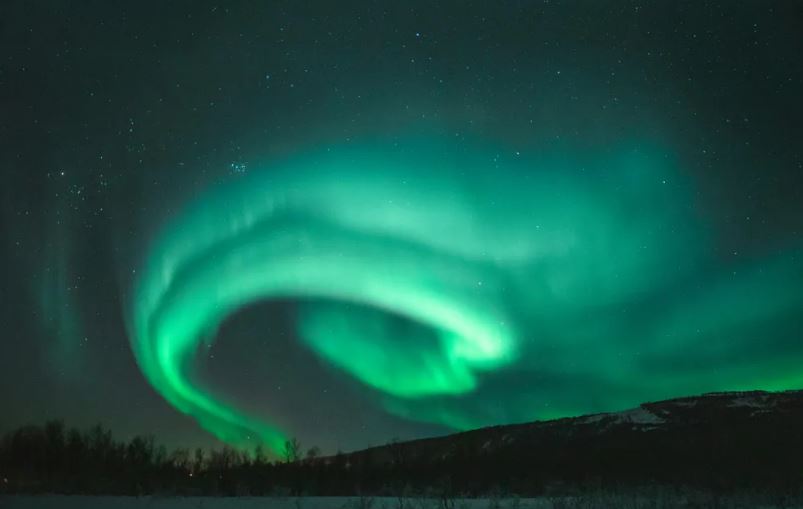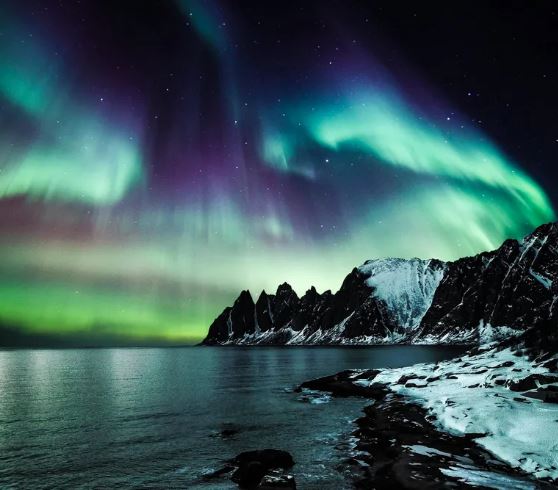This Valentine’s Day, a mild geomagnetic storm may light up the U.S. skies with stunning northern lights. Discover where to see this rare spectacle, the science behind the auroras, and tips for photographing them. Don’t miss the chance to experience this breathtaking celestial event for an unforgettable evening!

A view of the northern lights | Source: Pexels
A G1-class geomagnetic storm has been forecasted for Thursday evening, meaning auroral activity could be visible by Friday. This natural phenomenon, caused by solar activity and geomagnetic disturbances, arrives just in time for a romantic night under the stars.
The northern lights, or aurora borealis, offer a mesmerizing glimpse into solar activity, space weather, and Earth’s magnetic field. The sun constantly releases charged particles from its corona, generating solar wind. When these particles collide with Earth’s ionosphere, they create the breathtaking auroras seen in the sky.
In the Northern Hemisphere, this phenomenon is called the northern lights, while in the Southern Hemisphere, it is known as the southern lights, or aurora australis. According to Billy Teets, director of Dyer Observatory at Vanderbilt University, “These particles are deflected towards Earth’s poles by our planet’s magnetic field, interacting with the atmosphere, depositing energy, and causing it to fluoresce.”
With a bit of luck and clear skies, this geomagnetic storm could bring a rare and unforgettable opportunity to witness nature’s dazzling light show.

A shot of the northern lights | Source: Pexels
The colors of the auroras depend on Earth’s atmospheric composition. “Each atom or molecule, whether atomic hydrogen or carbon dioxide, absorbs and emits a unique set of colors, much like human fingerprints,” explained Billy Teets.
Green, the most common auroral color, is produced by oxygen molecules, while nitrogen molecules create red hues. These interactions between solar particles and atmospheric gases result in the vibrant displays seen in the night sky. The exact colors visible depend on altitude and the type of gas involved, making each aurora a distinct and breathtaking phenomenon shaped by Earth’s unique atmospheric chemistry.

A view of the northern lights | Source: Pexels
Where Will the Northern Lights Be Visible?
The National Oceanic and Atmospheric Administration (NOAA) Space Weather Prediction Center’s aurora viewline map indicates that residents in Idaho, Montana, North Dakota, Minnesota, Wisconsin, and Alaska have the highest chances of witnessing the northern lights in the coming days.
Depending on the storm’s intensity, auroras may extend as far south as northern Michigan and Maine. Higher-latitude areas, including Canada and Alaska, have even greater visibility potential.
Prime viewing locations include Anchorage, Fairbanks, Juneau, and Utqiagvik in Alaska, as well as Gillam, Manitoba; Iqaluit, Nunavut; Whitehorse, Yukon; and Yellowknife, Northwest Territories—offering a spectacular opportunity to experience this natural phenomenon.

How the Sun’s Activity Plays a Role
The sun is currently at its solar maximum, the peak of its activity cycle, leading to an increase in coronal mass ejections (CMEs)—bursts of magnetized plasma released from the sun’s corona.
When these CMEs travel toward Earth within the solar wind, they interact with the planet’s magnetic field, creating dazzling green and pink auroras. The upcoming geomagnetic storm is expected to result from a high solar wind event, similar to a previous G1-class storm.
Shawn Dahl, coordinator for NOAA’s Space Weather Prediction Center, explained that the northern lights occur when solar material and strong magnetic fields collide with atoms and molecules in Earth’s upper atmosphere.
“As part of that interaction, light gets released, and that’s what we see as the shimmering beauty of the aurora,” Dahl said.
This heightened solar activity enhances the chances of vibrant auroral displays, making it an exciting time for skywatchers. If conditions are favorable, observers in certain regions could witness one of nature’s most breathtaking light shows in the coming days.


